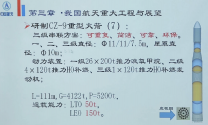First to list what I know so far:
| Already proven | Challenge | Question mark |
| YF-135 | Turbine and Pump is less challenging, proven by YF130 | Combustion chamber has higher thrust, not proven yet | |
| 240t kerosene | Turbine and Pump is proven by YF130
Combustion chamber proven by YF130 | | Is it an ongoing parallel program? If so, the turbine and pump is being developed already just like the combustion chamber of YF-135. |
| 200t methane | | It is in 预研 (pre-study), no key tech verification done yet. | |
If it is a parallel program as YF-130 and 135, its turbine-pump assembly would not be a new thing today. So I think 240t engine could be almost as ready as YF-130, a bit more advanced in progress than YF-135.
Lastly, I think all three paths will continue in full speed, CASC will make the final choice some time around 2025 when they need to finalize the design of the whole rocket and begin to produce.
I don't think time is being wasted. I highly believe that CASC is running all these engine development in parallel with dedicated resources. These teams share knowledges, data and experiences. I would guess that the chief of YF-130, 135 and 240t is the same person.
All the variants have 2 stage and 3 stage configurations. 2 stage for LEO and 3 stage for Moon and Mars.
Here is the 3 stage configuration of the 200t methane engined.
View attachment 101370
It is the same question as for the 240t Kerosene engine. Is it being developed in parallel as YF-90 which is partially proven?
Not seeing any official paper or news should not be any indication. We have seen papers on 200t methane in many years, yet it still does not have official designation. However, YF-135 got the designation only recently without any paper.



